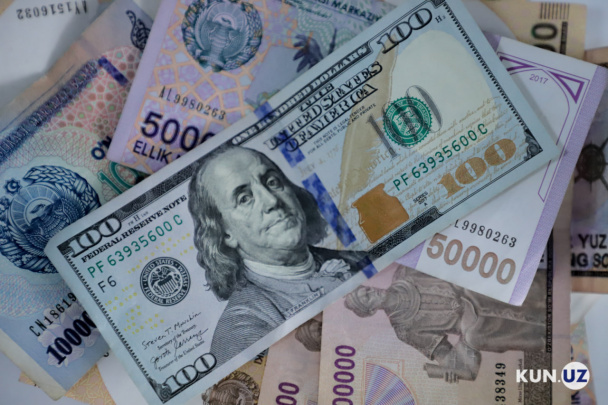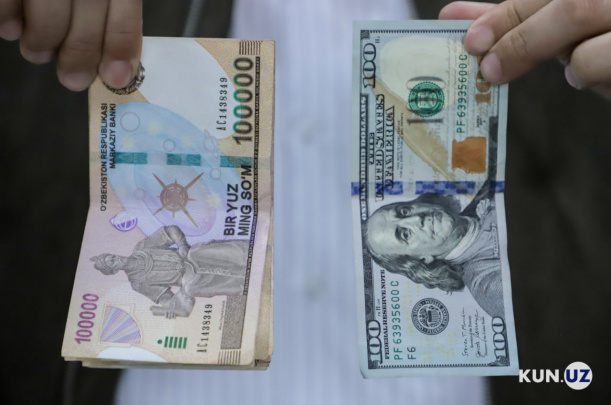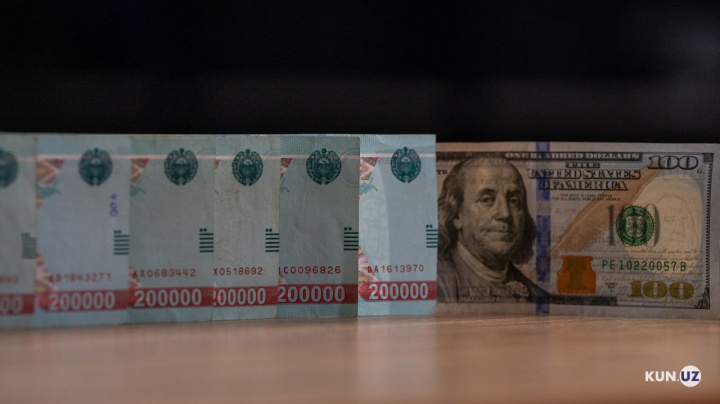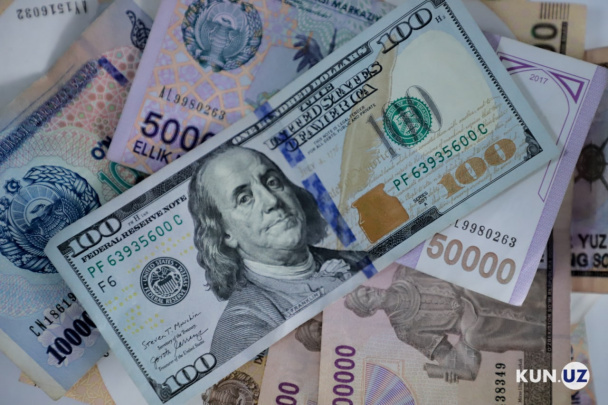UZS sees sharp rise against US dollar: Key economic drivers explained
Uzbekistan’s currency – soum – has appreciated by almost 110 UZS against the US dollar over the past two days. In May alone, the national currency strengthened by 0.8%, and by 0.6% since the beginning of the year. This comes amid a global decline in the dollar’s value, rising foreign exchange reserves, record-high gold prices, and increased export volumes.

Photo: Kun.uz
On May 29, the Central Bank of Uzbekistan set new exchange rates for foreign currencies against the UZS.
Following daytime trading on Tuesday, the US dollar fell by 53 UZS, and by another 55.77 UZS on Wednesday, settling at 12,831.13 UZS — its lowest level since early December 2023.
So far in May, the dollar has depreciated by 0.8% against the UZS (compared to 0.2% in May 2024). Since the beginning of the year, the national currency has appreciated by 0.57% against the dollar. For comparison, during January–May 2024, the UZS depreciated by 2.5%, and by 1.7% over the same period in 2023.
On Wednesday, commercial banks bought dollars at rates ranging from 12,775 to 12,860 UZS (only MyBank accepted at the latter rate). Selling rates varied between 12,890 and 12,950 UZS.
Why is the UZS strengthening?
Mirkomil Kholboev, an economics researcher and master's student at Jeonbuk National University (South Korea), explained that global uncertainty has increased since Donald Trump’s term as US president. This includes factors such as trade wars, inconsistent foreign policy, and Russia's involvement in the war with Ukraine (which appears to be diminishing recently).
As a result, investor confidence in the US economy has weakened, impacting both equity and currency markets. Since the start of the year, the dollar index has declined by more than 9%, indicating a general weakening of the dollar globally over the past 4–5 months, he noted.
In this climate of uncertainty, gold prices have surged — rising by 24% since December 2023. As one of the world’s key gold exporters, Uzbekistan benefits directly from this, with gold making up a significant portion of the country's international reserves.
Thanks to rising gold prices, Uzbekistan’s reserves have increased by nearly 20% since the beginning of the year, reaching $49.2 billion. According to Kholboev, this boosts the Central Bank's ability to intervene in the foreign exchange market.
Simultaneously, exports are growing, driven by high gold prices. In the first four months of 2025, exports totaled $12 billion — a 35.1% increase compared to the same period last year. Gold exports alone surged by 62.3%, reaching $5.6 billion.
The sharp rise in export revenues has reduced the trade deficit to $846 million. Over the past three months, Uzbekistan even recorded a trade surplus, where exports exceeded imports — creating favorable conditions for the UZS’s exchange rate.
Geopolitical shifts, particularly in US-Russia relations, have also supported the Russian ruble — which strengthened against the dollar by 7.2% and 7.6% in February and March, respectively. This has accelerated remittance inflows from Russia to Uzbekistan.
In the first quarter, remittances reached $3.3 billion, a 32% increase year-on-year. The Central Bank attributes this to stronger partner-country currencies and increased labor migration to higher-income destinations. The Bank has also raised its forecast for 2025 remittance inflows.
Additionally, the credit rating agency S&P upgraded Uzbekistan’s credit outlook from "stable" to "positive". According to Kholboev, this indicates growing confidence in the national economy, which may positively influence the currency market.
Kholboev emphasized that it’s difficult to pinpoint a single dominant factor in the UZS’s recent surge — it is likely the result of a combination of all the above-mentioned drivers.
“Although short-term exchange rate dynamics are hard to predict, it is reasonable to expect a relatively stable UZS-USD exchange rate in 2025,” Kholboev concluded. “This outlook is supported by high gold and foreign exchange reserves, continued global uncertainty, sustained gold price growth, and improving economic conditions in the countries where Uzbek labor migrants work.”
Related News

14:40 / 20.05.2025
USD sees sharp swings against UZS in a week of volatility

13:04 / 01.05.2025
Experts predict USD to reach up to 14,000 UZS by year-end

13:07 / 02.04.2025
Central Bank reports moderate strengthening of UZS in early 2025

17:18 / 01.02.2025



